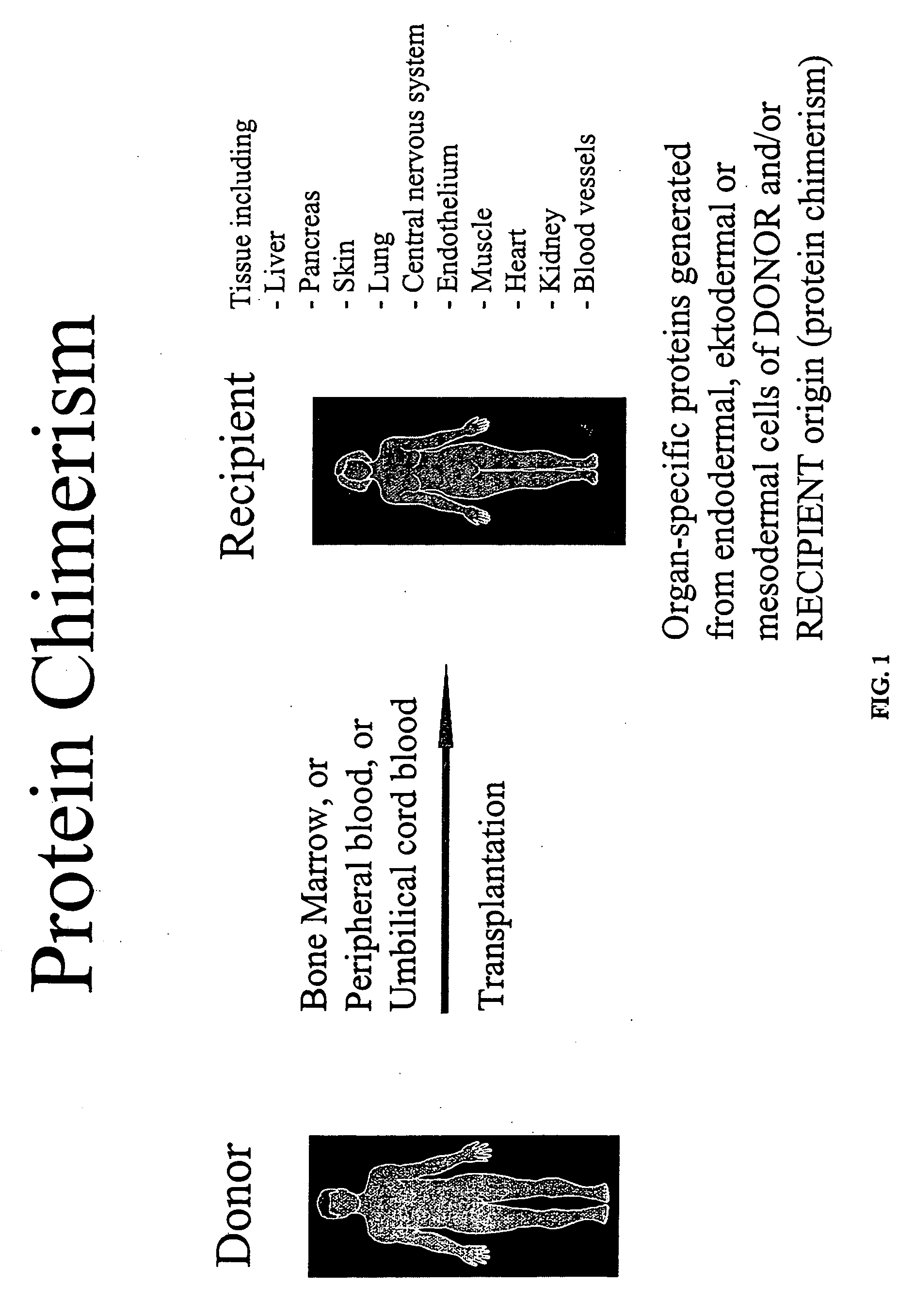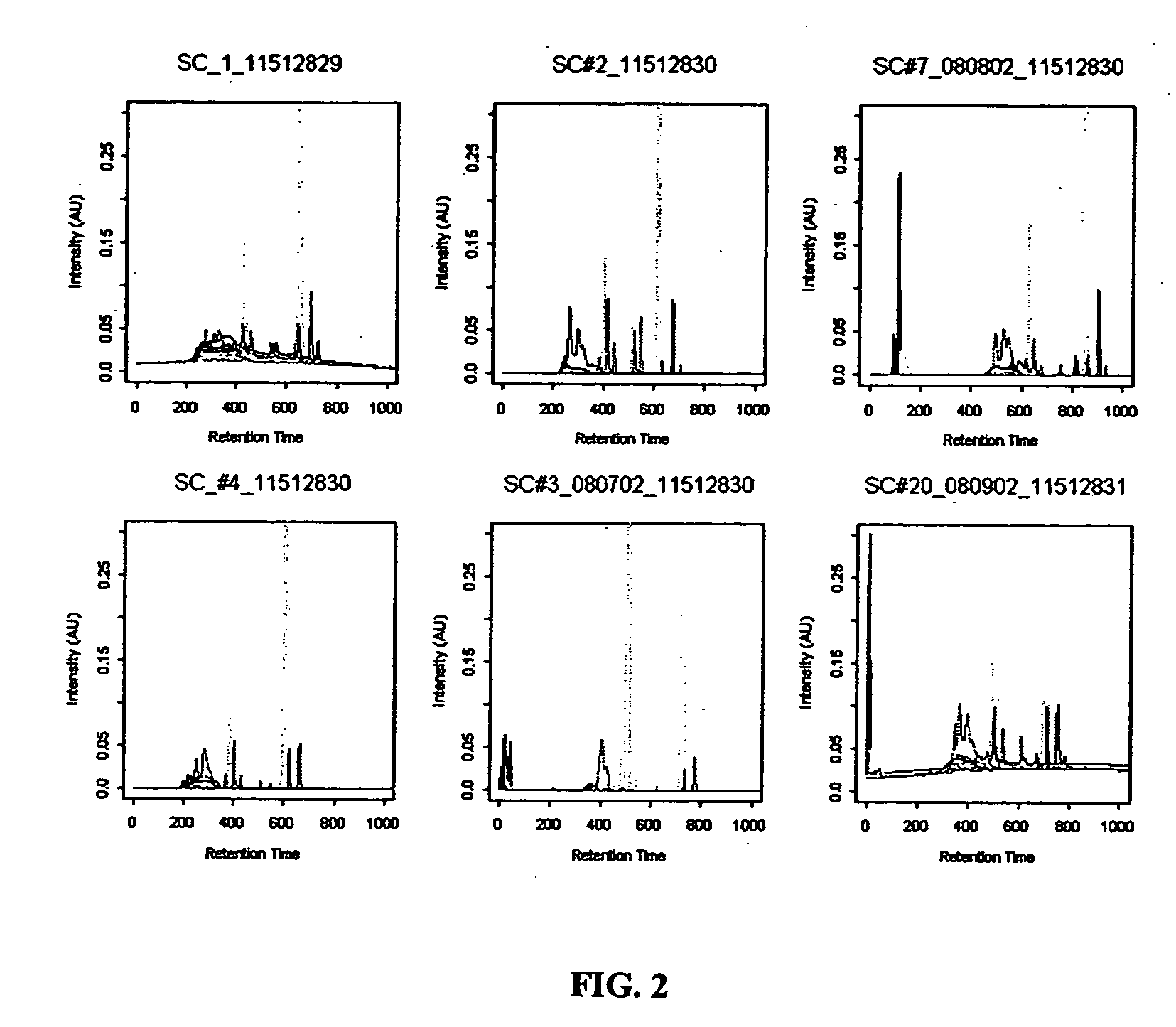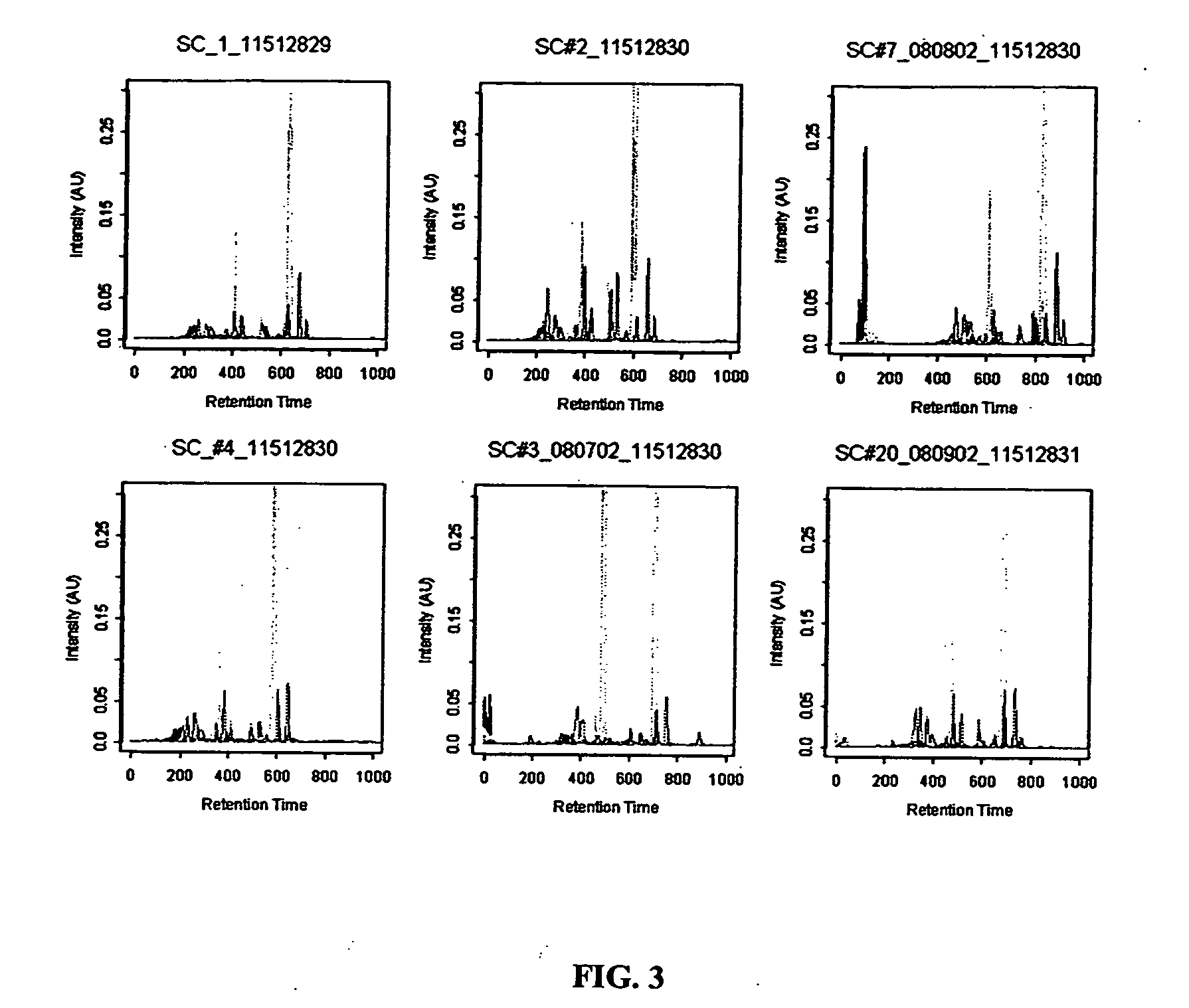Identification and quantification of organ-specific proteins derived from human allogeneic cells using proteomics
a technology of proteomics and organ-specific proteins, applied in the field of stem cell transplantation, can solve the problems of limited transplantation (e.g., bone marrow transplantation), technical conditions that could hinder interpretation of those data, etc., and achieve the effect of improving stem cell transplantation and evaluating the effect of results
- Summary
- Abstract
- Description
- Claims
- Application Information
AI Technical Summary
Benefits of technology
Problems solved by technology
Method used
Image
Examples
example 1
Experimental Procedure
[0131] Blood samples were obtained from the donor prior to the collection of stem cells from peripheral blood and from the recipient at two times: pre-transplant and post-transplant. The pre-transplant blood sample was taken prior to chemotherapy and transplantation and the post-transplant sample was taken at least 4 weeks after stem cell transplant, when there was evidence of hematopoietic engraftment of the donor by the recipient.
[0132] The blood samples were analyzed by two dimensional high performance liquid chromatography (2D-HPLC) and protein maps were obtained. These protein maps were compared, and specific proteins that were unique to the donor, and not present in the pre-transplant recipient sample were found in the post-transplant recipient blood sample. These proteins were obtained from the column eluates, and identified by N-terminal sequencing performed by mass spectrometry. The presence of certain proteins such as enzymes demonstrate the functio...
example 2
Protein Chimerism of the Stem Cell Transplant
[0133] The presence of both the donor and recipient derived proteins in the recipient's blood after successful transplantation is known as protein chimerism (FIG. 1). Studies are conducted to demonstrate the protein chimerism resulting from the successful engraftment and functionality of the stem cell transplant. Stem cells are obtained from peripheral blood, bone marrow, umbilical cord blood and other human tissues representing hematopoietic and non-hematopoietic tissues. The multi-dimensional protein separation procedure described herein is used to analyze the protein samples.
example 3
Assessing Stem Cell Transplant in Various Tissues
[0134] A donor-derived stem cell injected into a recipient may differentiate in various organs, such as the liver or kidney, but nonetheless maintain its functionality. Thus, studies are conducted to demonstrate the successful engraftment and functionality of stem cell transplant in multiple target tissues of the recipient. As described in Example 1, blood samples are collected and multi-dimensional protein separation techniques are used to analyze the protein products which identified that tissue grafting had occurred.
PUM
| Property | Measurement | Unit |
|---|---|---|
| time | aaaaa | aaaaa |
| time | aaaaa | aaaaa |
| time | aaaaa | aaaaa |
Abstract
Description
Claims
Application Information
 Login to View More
Login to View More - R&D
- Intellectual Property
- Life Sciences
- Materials
- Tech Scout
- Unparalleled Data Quality
- Higher Quality Content
- 60% Fewer Hallucinations
Browse by: Latest US Patents, China's latest patents, Technical Efficacy Thesaurus, Application Domain, Technology Topic, Popular Technical Reports.
© 2025 PatSnap. All rights reserved.Legal|Privacy policy|Modern Slavery Act Transparency Statement|Sitemap|About US| Contact US: help@patsnap.com



